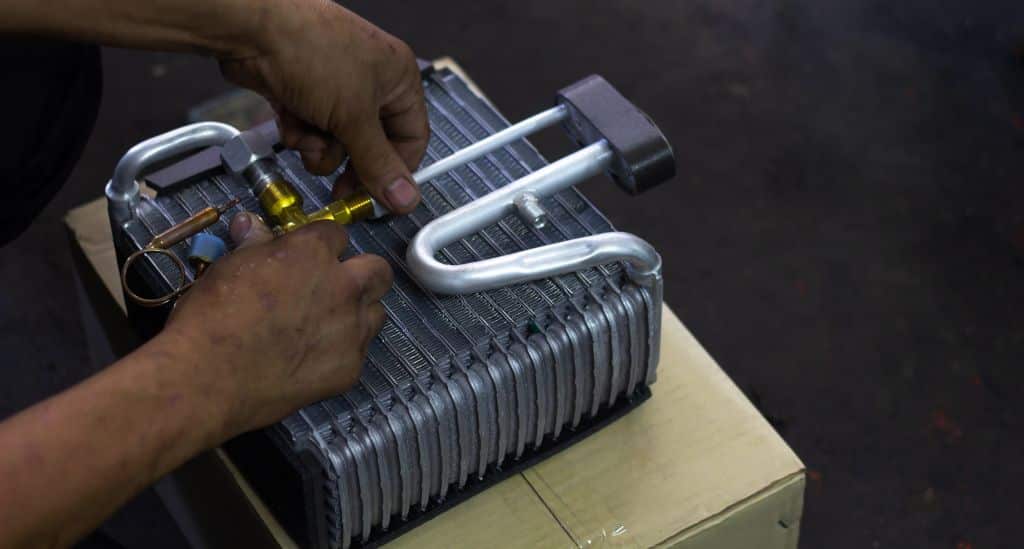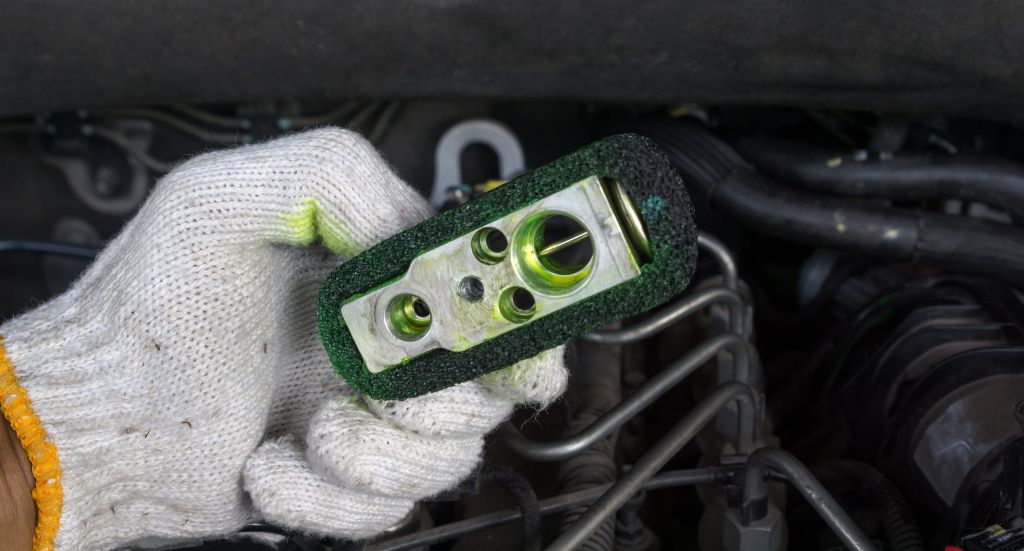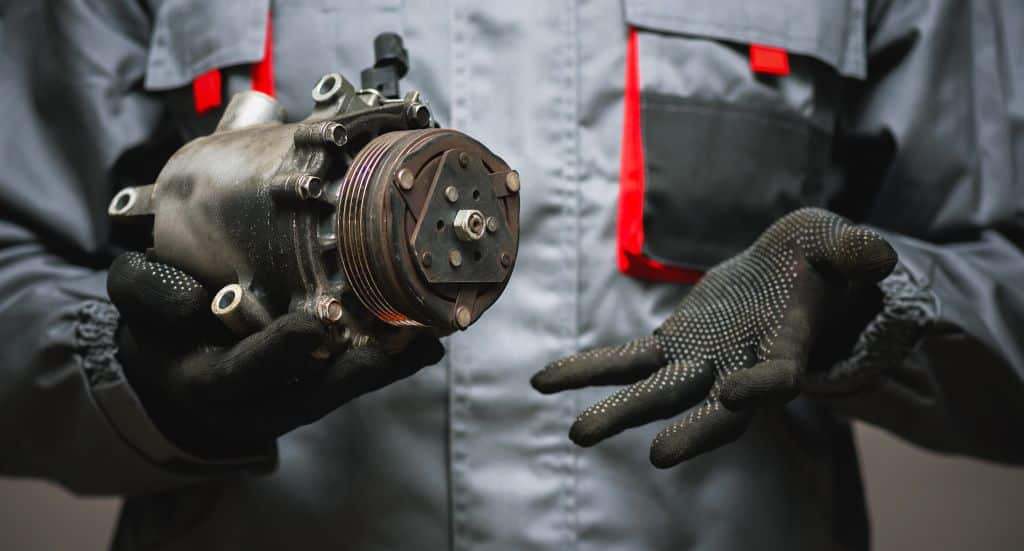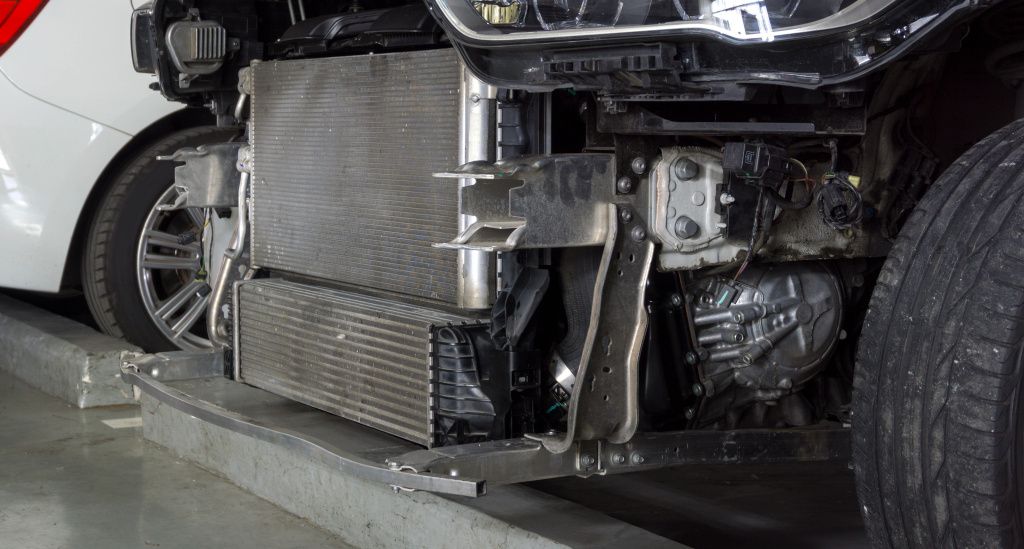In the midst of scorching summer temperatures and frigid winter chills, the vehicle’s air conditioning (AC) system emerges as a crucial component that ensures passenger comfort.
Behind the scenes of its seemingly simple operation lies a complex interplay of components.
This blog post aims to delve into the intricate makeup of a vehicle’s AC system, shedding light on its functioning and significance.
Components of a Vehicle Air Conditioning System:
Compressor:

Situated within the engine compartment, the compressor is the AC system’s central unit.
Its primary task is to circulate the refrigerant gas throughout the system.
By compressing low-pressure, low-temperature gas, the compressor transforms it into high-pressure, high-temperature gas, initiating the cooling process.
Condenser (Radiator):

Positioned at the front of the vehicle, the condenser is responsible for facilitating heat exchange.
Here, the high-pressure gas from the compressor is converted into a high-pressure liquid.
As external air passes over the condenser coils, it aids in dissipating heat, causing the refrigerant to condense and release absorbed heat.
Evaporator:

Located within the dashboard, the evaporator is a crucial element in the cooling process.
It receives the high-pressure liquid refrigerant from the condenser.
Through a phase change process, the refrigerant transforms into a low-pressure gas, absorbing heat from the cabin air and cooling it before it is blown into the vehicle.
Expansion Valve:

The expansion valve regulates the flow of refrigerant into the evaporator.
By rapidly expanding the refrigerant, the valve induces a substantial drop in temperature, essential for cooling within the evaporator.
How the Vehicle AC System Operates
Compression:

The AC cycle begins with the compressor’s action. It compresses the refrigerant gas, raising its temperature and pressure. This high-temperature, high-pressure gas then moves on to the condenser.
Condensation:

Within the condenser, heat exchange occurs, leading to the transformation of high-pressure gas into a high-pressure liquid. As external air assists in heat dissipation, the refrigerant releases heat and condenses.
Evaporation:

The refrigerant, now in a high-pressure liquid state, enters the evaporator. A rapid expansion through the expansion valve causes it to transition into a low-pressure gas, leading to a temperature drop.
This transformation results in the absorption of heat from the cabin air, thereby cooling it.
Cooling Effect:

The cooled air from the evaporator is directed into the vehicle’s interior through vents, ensuring a comfortable environment for passengers.
Meanwhile, the low-pressure gas refrigerant returns to the compressor, ready to restart the cycle.
Maintenance and Efficiency
Embracing the significance of maintenance paves the way for the efficiency and durability of your AC system.
Regular check-ups to monitor refrigerant levels, condenser and evaporator cleanliness, and compressor functionality safeguard the seamless functioning of your system.
By attending to these nuances, you not only amplify passenger comfort but also extend your vehicle’s engine life and bolster fuel efficiency.
Conclusion:
The vehicle’s air conditioning system is a technical marvel that operates behind the scenes, ensuring optimal comfort during travels.
Its intricate components work harmoniously to create a cooling effect, transforming the cabin environment regardless of external weather conditions.
As you hit the road, take a moment to appreciate the sophistication of your vehicle’s AC system, a testament to engineering ingenuity and passenger well-being.







